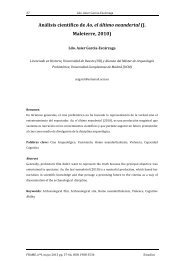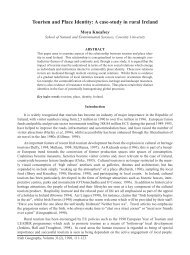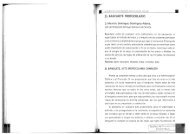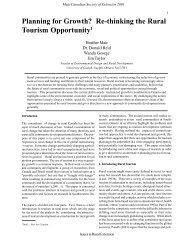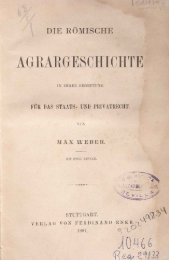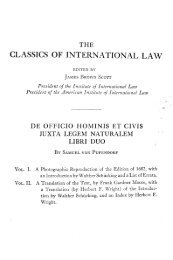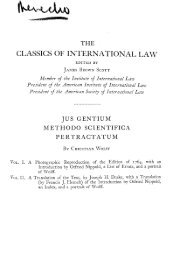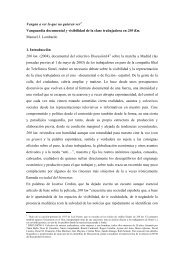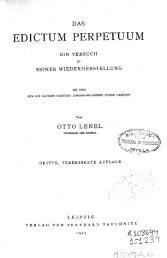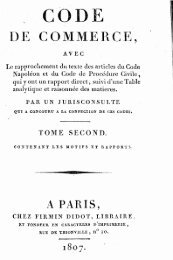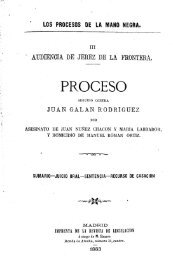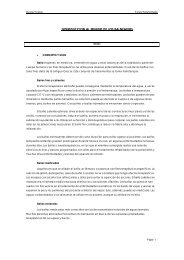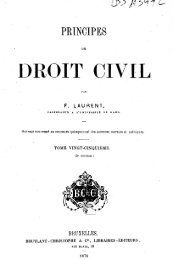Measuring Sustainable Tourism Development in Remote Rural ...
Measuring Sustainable Tourism Development in Remote Rural ...
Measuring Sustainable Tourism Development in Remote Rural ...
You also want an ePaper? Increase the reach of your titles
YUMPU automatically turns print PDFs into web optimized ePapers that Google loves.
Both the residents <strong>in</strong> L<strong>in</strong>doso/Soajo and Svaneke belives that the life <strong>in</strong> the community<br />
has improved because of tourism (statement 30).<br />
It seems that, accord<strong>in</strong>g to the residents, there exists hope for more tourism and<br />
development <strong>in</strong> tourism among the residents <strong>in</strong> L<strong>in</strong>doso/Soajo (statement 11, 14 and<br />
25 <strong>in</strong> table 6) while Svaneke has reached an upper level for the number of tourists<br />
(statement 13). L<strong>in</strong>doso/Soajo do not feel the negative impact nearly as much as<br />
Svaneke. The residents <strong>in</strong> Soajo/L<strong>in</strong>doso wish to spend resources to develop the<br />
community towards more tourism (statement 10 and 23).<br />
Accord<strong>in</strong>g to the socio-demographic characteristics (see table 7a-7f), the respondents<br />
<strong>in</strong> L<strong>in</strong>doso/Soajo have, basically, elementary and secondary education (80%), with<br />
21% of the respondents hav<strong>in</strong>g a higher level of education. In Svaneke 66% of the<br />
respondents have more than elementary and secondary education. The residents <strong>in</strong><br />
Svaneke are more academically educated. In terms of professions, there were major<br />
differences. The number of retired people stood out <strong>in</strong> Svaneke with 41% compared to<br />
L<strong>in</strong>doso/Soajo with 15%. This is reflected <strong>in</strong> the average age (see Table 7c). Also, <strong>in</strong><br />
L<strong>in</strong>doso/Soajo, 22% of the respondents were students, compared to no student<br />
respondents <strong>in</strong> Svaneke. The majority of the people <strong>in</strong>terviewed <strong>in</strong> L<strong>in</strong>doso/Soajo are<br />
men while the distribution <strong>in</strong> Svaneke is almost half-and-half.<br />
Table 7: Socio-demographic characteristics<br />
Table 7a: Occupation<br />
L<strong>in</strong>doso/Soajo Svaneke<br />
Occupation Assist<strong>in</strong>g spouses 17%<br />
Self-employed persons 0 15%<br />
Professional/management 2% 4%<br />
Adm<strong>in</strong>istrative 15% 26%<br />
Skilled 12%<br />
Unskilled wage earners 10% 11%<br />
Unemployed 7% 4%<br />
Retired 15% 41%<br />
Student 22%<br />
Table 7b: Education<br />
Education Elementary 51% 31%<br />
Secondary 29% 4%<br />
Vocational school 12% 42%<br />
Some college 2% 4%<br />
College graduate 7% 8%<br />
Post-graduate study 12%<br />
Table 7c: Age<br />
Average Age 40.91 56.29<br />
Table 7d: Gender<br />
Gender Male 71% 46%<br />
Female 29% 54%<br />
Table 7e: Average number of years lived <strong>in</strong> village<br />
Average number of years lived <strong>in</strong> village 29.35 23.85<br />
Table 7f:Lived outside the village more than one year<br />
Lived outside village more than 1 year Yes 57% 85%<br />
No 43% 15%<br />
If yes, how many years? Average 16.72 32.59



